= Rebutia tarvitaensis F.Ritter
Kakteen Sukk. 28(4): 78. 1977
Accepted Scientific Name: Rebutia spegazziniana Backeb.
Kakteen-Freunde ii. No. 1, (1933); Backeb. Blatter Kakteenforsch. 1934, Pr. 2,[p. 8].
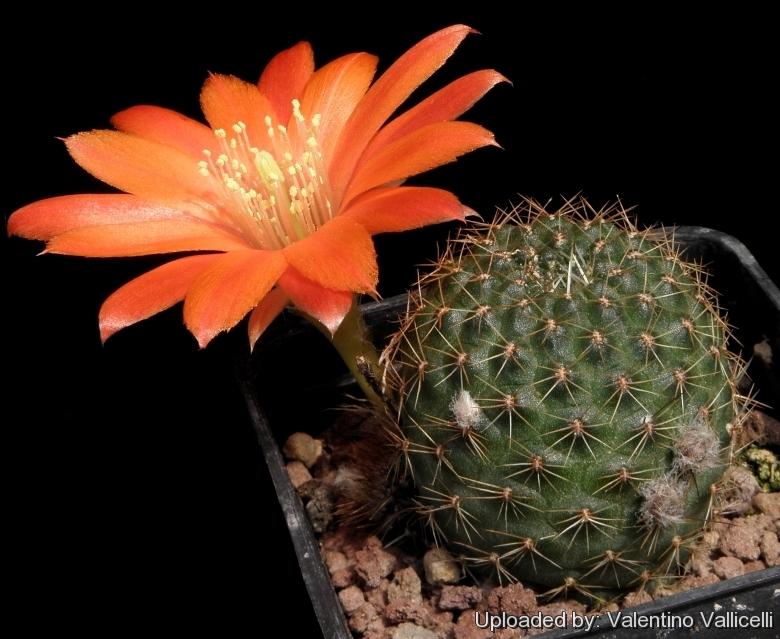
Aylostera tarvitaensis (Rebutia tarvitaensis) Photo by: Valentino Vallicelli
Origin and Habitat: Tarvita , Azurdua Co. , dpt. Chuquisaca , Bolivia.
Altitude: Around 2700 metres above sea level.
Synonyms:
See all synonyms of Rebutia spegazziniana
back
Accepted name in llifle Database:Rebutia spegazziniana Backeb.Kakteen-Freunde ii. No. 1, (1933); Backeb. Blatter Kakteenforsch. 1934, Pr. 2,[p. 8].Synonymy: 35
back
Description: Very small clumping plants.
Stems: Individual heads short-cylindrical 3-6 cm wide, 4 cm tall, The colour of the epidermis vary from grey-green to olive-green with violet tints.
Spines: Short .
Flowers: 4-4,5 cm in diameter bright orange-red.
Roots: Tap root.
Subspecies, varieties, forms and cultivars of plants belonging to the Rebutia spegazziniana group
- Rebutia froehlichiana Rausch
 Rebutia fusca F.Ritter: has tiny bristle spines and vibrant orange-red flower. Distribution: Oruro, Tarija, Bolivia.
Rebutia fusca F.Ritter: has tiny bristle spines and vibrant orange-red flower. Distribution: Oruro, Tarija, Bolivia.- Rebutia mamillosa Rausch: has dark greenish brown bodies becoming bronzed purple in full sun and forms small clumps of small heads around 20 mm across. Flowers dark red, ca. 2,5 cm in diameter with showy white stamens. Distribution: west of Camargo and adjacent areas, Chuquisaca, Bolivia.
 Rebutia mamillosa var. australis F.Ritter: has bodies 20-30 mm wide, 10-15 ribs, 12-20 radial spines, 3-6 mm long and 0-4 centrals equal in length. Flowers 26-46 mm long with white filaments. Distribution: Habitat, San Antonio, Prov. Mendez, Bolivia.
Rebutia mamillosa var. australis F.Ritter: has bodies 20-30 mm wide, 10-15 ribs, 12-20 radial spines, 3-6 mm long and 0-4 centrals equal in length. Flowers 26-46 mm long with white filaments. Distribution: Habitat, San Antonio, Prov. Mendez, Bolivia.- Rebutia mamillosa var. orientalis F.Ritter: has areoles abundantly filled with white wool, 0-4 radial spines, 5-7 mm long, darker at base. Distribution: Tarija towards the south, Bolivia.
 Rebutia patericalyx F.Ritter: has vibrant orange-red flower and tiny bristle spines covered by tiny hairs. Distribution: La Queva, Chuquisaca, Bolivia.
Rebutia patericalyx F.Ritter: has vibrant orange-red flower and tiny bristle spines covered by tiny hairs. Distribution: La Queva, Chuquisaca, Bolivia.- Rebutia rubiginosa F.Ritter
 Rebutia spegazziniana Backeb.: widespread and variable species that will clump with age and produces large and beautiful bright red flowers. Distribution: Bolivia and Argentina.
Rebutia spegazziniana Backeb.: widespread and variable species that will clump with age and produces large and beautiful bright red flowers. Distribution: Bolivia and Argentina. Rebutia spegazziniana var. atroviridis (Backeb.) Šída: has darker bluish grey-green skin and lighter, weaker spines. Blooms dark red. Distribution: Bolivia and Argentina.
Rebutia spegazziniana var. atroviridis (Backeb.) Šída: has darker bluish grey-green skin and lighter, weaker spines. Blooms dark red. Distribution: Bolivia and Argentina. Rebutia spegazziniana var. boliviensis n.n., Rausch
Rebutia spegazziniana var. boliviensis n.n., Rausch- Rebutia sumayana Rausch
- Rebutia tarijensis Rausch
 Rebutia tarvitaensis F.Ritter: has grey-green to olive-green epidermis with violet tints and orange-red blooms. Distribution: Tarvita, Chuquisaca, Bolivia.
Rebutia tarvitaensis F.Ritter: has grey-green to olive-green epidermis with violet tints and orange-red blooms. Distribution: Tarvita, Chuquisaca, Bolivia.- Rebutia tuberosa F.Ritter
 Rebutia vulpina F.Ritter: Flowers are bright red, the petals tipped scarlet, stigma and stamens white. Distribution: Bolivia, Tarija, Mendez, west of Tarija.
Rebutia vulpina F.Ritter: Flowers are bright red, the petals tipped scarlet, stigma and stamens white. Distribution: Bolivia, Tarija, Mendez, west of Tarija.- Rebutia zecheri Rausch
Notes: It would appear that in cultivation they grow larger and cluster more vigorously than in habitat.
Bibliography: Major referneces and further lectures
1) Walther Haage “Cacti and succulents: a practical handbook” Dutton, 1963
2) Edward Anderson “The Cactus family” Timber Press, Incorporated, 2001
3) James Cullen, Sabina G. Knees, H. Suzanne Cubey "The European Garden Flora Flowering Plants: A Manual for the Identification of Plants Cultivated in Europe, Both Out-of-Doors and Under Glass" Cambridge University Press, 11/Aug/2011
4) David R Hunt; Nigel P Taylor; Graham Charles; International Cactaceae Systematics Group. "The New Cactus Lexicon" dh books, 2006
5) N. L. Britton, J. N. Rose “The Cactaceae. Descriptions and Illustrations of Plants of the Cactus Family.” Volume 4, The Carnegie Institution of Washington, Washington 1923,
6) Curt Backeberg: “Die Cactaceae: Handbuch der Kakteenkunde” Volume V, Gustav Fischer Verlag, Stuttgart New York 1982–1985
More...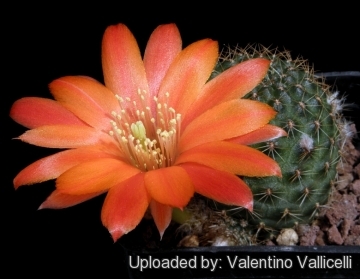 Aylostera tarvitaensis (Rebutia tarvitaensis) Photo by: Valentino Vallicelli
Aylostera tarvitaensis (Rebutia tarvitaensis) Photo by: Valentino Vallicelli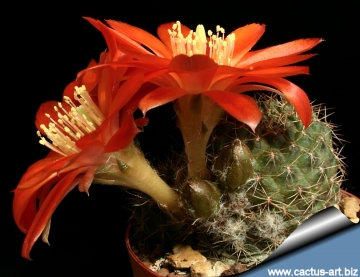 Aylostera tarvitaensis (Rebutia tarvitaensis) Photo by: Cactus Art
Aylostera tarvitaensis (Rebutia tarvitaensis) Photo by: Cactus Art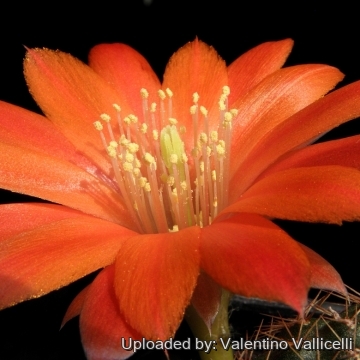 Aylostera tarvitaensis (Rebutia tarvitaensis) Photo by: Valentino Vallicelli
Aylostera tarvitaensis (Rebutia tarvitaensis) Photo by: Valentino Vallicelli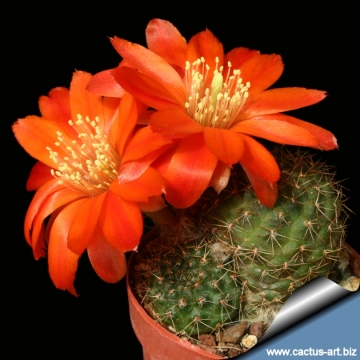 Aylostera tarvitaensis (Rebutia tarvitaensis) Photo by: Cactus Art
Aylostera tarvitaensis (Rebutia tarvitaensis) Photo by: Cactus Art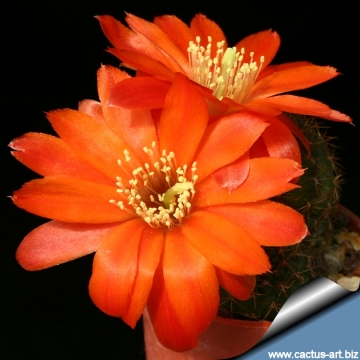 Aylostera tarvitaensis (Rebutia tarvitaensis) Photo by: Cactus Art
Aylostera tarvitaensis (Rebutia tarvitaensis) Photo by: Cactus ArtSend a photo of this plant.The gallery now contains thousands of pictures, however it is possible to do even more. We are, of course, seeking photos of species not yet shown in the gallery but not only that, we are also looking for better pictures than those already present.
Read More... Cultivation and Propagation: It is easy to grow and recommended for beginners. Prefer gritty, porous mix with a pH slightly on the acidic side. Full sun to light shade, Water regularly in summer but do not overwater (the root system is rot prone) and allow the pot to dry out between waterings. Keep dry in winter Hardy to -4°C it will take low temperatures when dry and do require a winter rest period. This species will occupy a small flower pot comfortably and remain a manageable sized house plant.
Pest and disease: This plants are subject to mealy-bug attack and to fungus and rot problems brought about by overwatering and high humidity.
Propagation: Seed or offsets.















